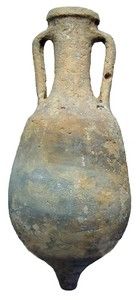Travelling south of Chennai about 173 kms or 7.5 kms from Pondicherry, you will reach Arikamedu on the banks of Ariyankuppam river. Arikamedu has a beautiful history for bead lovers. It is considered as one of the most important Early Historical Archaeological site in South India that is believed to have existed from 300 BC to 1800 AD. Arikamedu was an Indo-Roman trading city and the earliest known Indo-Pacific bead making site. Arikamedu was one of suppliers of Indo Pacific beads to the old world, for more than 2,000 years. The industry began in 300 BC and the beadmakers subsequently moved to other sites in Andhra Pradesh, Sri Lanka, Malaysia, Vietnam and Thailand to continue their craft.
The word Arikamedu is believed to be derived from the tamil word Arrukumedu meaning ‘Mound of ruins’ or ‘arukumedu’ meaning ‘mound on a riverbank’. Another suggestion is that it could be ‘mound of Arukan’, a tamil word for Jain God, because a statue of Mahavir avatar was found here.
Arikamedu is an extinct port city that was first discovered by a French Astronomer Guillaume Le Gentil during his visits between 1768 and 1771. There has been many rediscoveries on this archaeological site to study the activities and to ascertain the trade link between peninsular India with Roman empire. Arikamedu was well inhabited with lapidary industry (The art of lapidary lies in cutting and polishing fine and precious gemstones.) as well as pottery production which is why you will find an abundance of pottery / terracotta wares on the streets of Pondicherry till this day! The city had an extensive Glass Bead Manufacturing facility and is considered as “mother of all bead centers” in the world. Most of their production were aimed for export. The city was a manufacturing hub of textiles particularly of Muslin clothes, fine terracotta objects, jewelries from beads of precious and semi precious stones, glass, gold and Shells.
Pic 1 : courtesy Thrillophilia
Pic 3: courtesy The Hindu
Pic 4: pinterest Roman Amphora









Comments